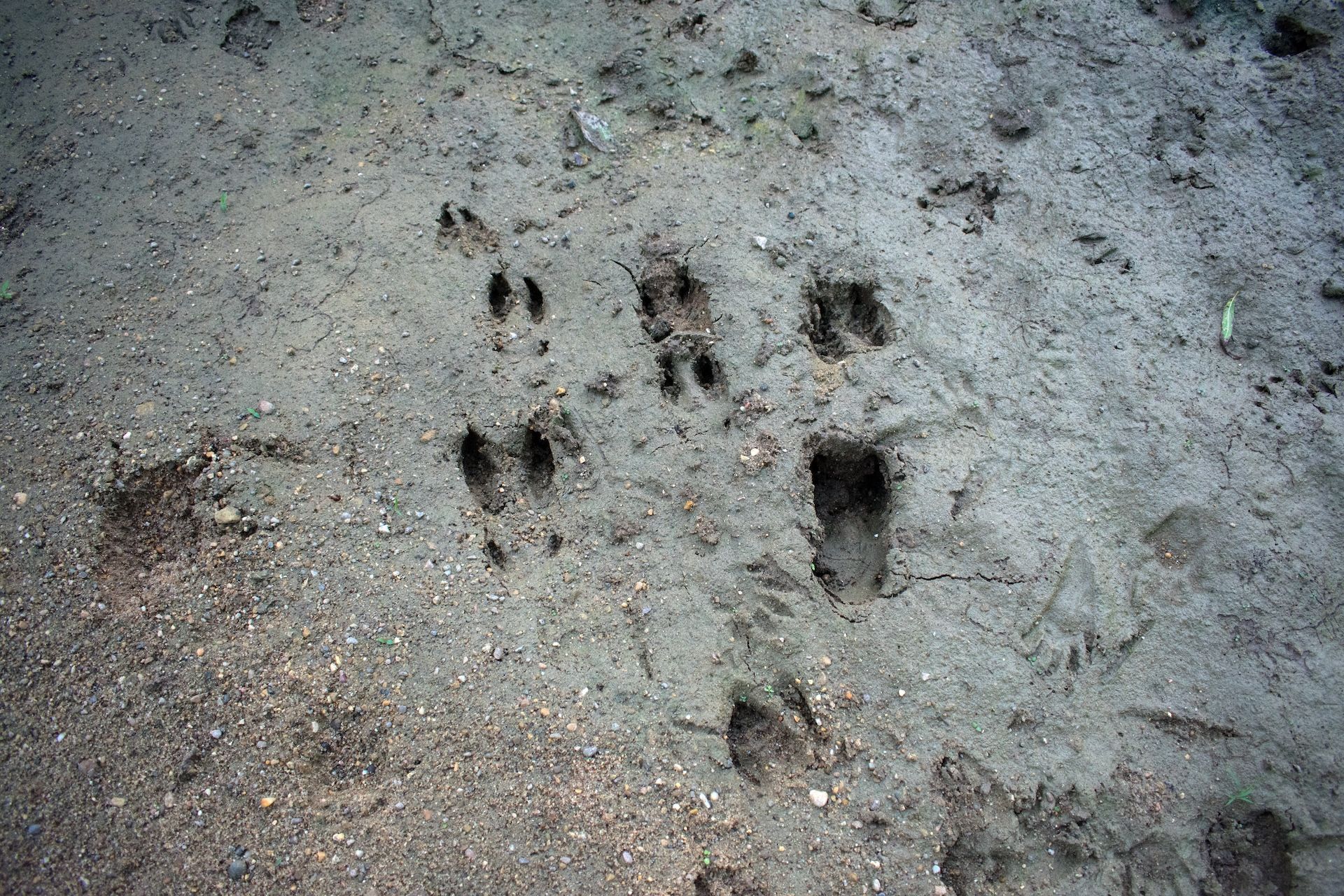However, with other animal tracks in the woods and overlapping hunting seasons, it's crucial to identify a deer vs elk track (for example), or a buck vs. doe. So, today we talk about whitetail tracks, what they look like, and what they mean when hunting.
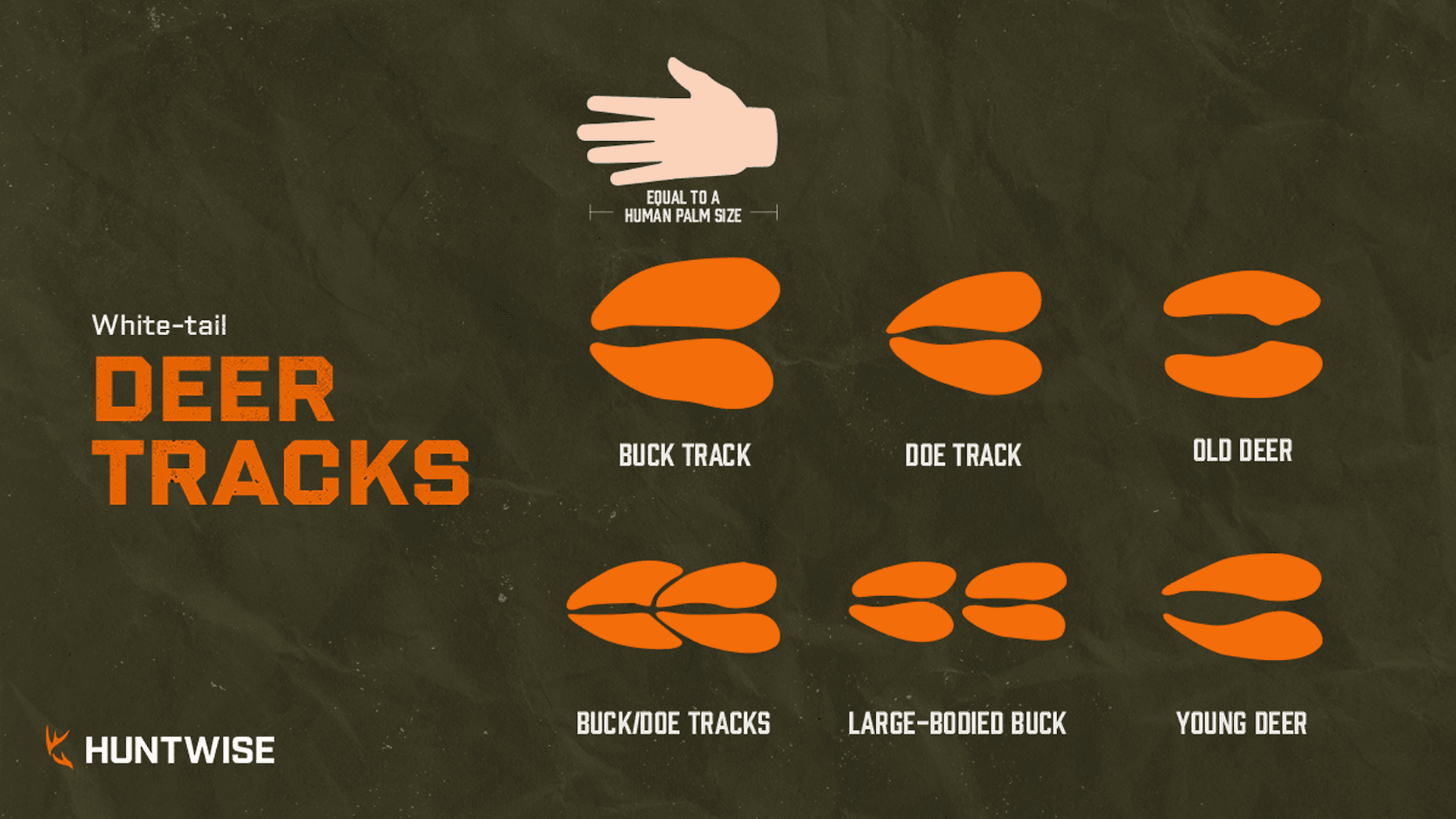
What is a Good Whitetailed Deer Tracks Description?
Whitetail deer tracks are slightly heart-shaped, with the point at the front of the hoof. They are also identified as split-hoof tracks. Each track, front and back, will show two oblong and pointed toes, indicating the direction the deer is walking.
The front tracks are generally larger than the hind tracks and tend to show more splaying, which is the splitting of the two toes of the hoof, especially in soft dirt or mud.
For a general guide:
- Mature bucks have front hooves around 3 to 3.5 inches long and rear hooves around 2 to 3 inches long
- Does and small bucks tend to have hooves around 2 to 2.5 inches long
What Do White Tail Deer Tracks Tell You?
Like I mentioned earlier, when analyzing whitetail deer tracks, the smaller point will show the direction the deer is walking. After you determine the direction they are headed, you can then identify the travel pattern.
For example:
- An even stride of about 18 to 30 inches shows that a deer is walking.
- However, if the deer is running, it will leave deeper and wider prints, and they will also be more splayed.
This knowledge can help you track a deer after it has been shot. If you are having trouble finding consistent blood but know the approximate path that the deer ran, you can track looking for both blood and deep, splayed hoof prints, depending on the terrain.
As you track in the woods, also look for leaves or debris that are freshly disturbed. However, if you are in an agricultural field or field edge, look for tracks that are gouged deeper than the rest and show fresh dirt or mud.
It is not ideal, but I have used this method before when blood was hard to find and was able to cover the gap between blood droplets.
Buck vs. Doe Tracks: What's the Difference?
The primary difference between buck and doe tracks is that buck tracks are typically larger in every way compared to doe tracks. They may also be deeper because of the added body weight bucks carry around.
Another sign to look for when distinguishing between buck and doe tracks is drag marks that sometimes are present with buck tracks when they drag their feet, especially during the rut when they are worn down.
Meanwhile, doe tracks are often closer together and in a neater pattern. Also, you will usually find doe tracks in groups. If you find a single track, that is more likely to be a buck, especially just before or during the rut.
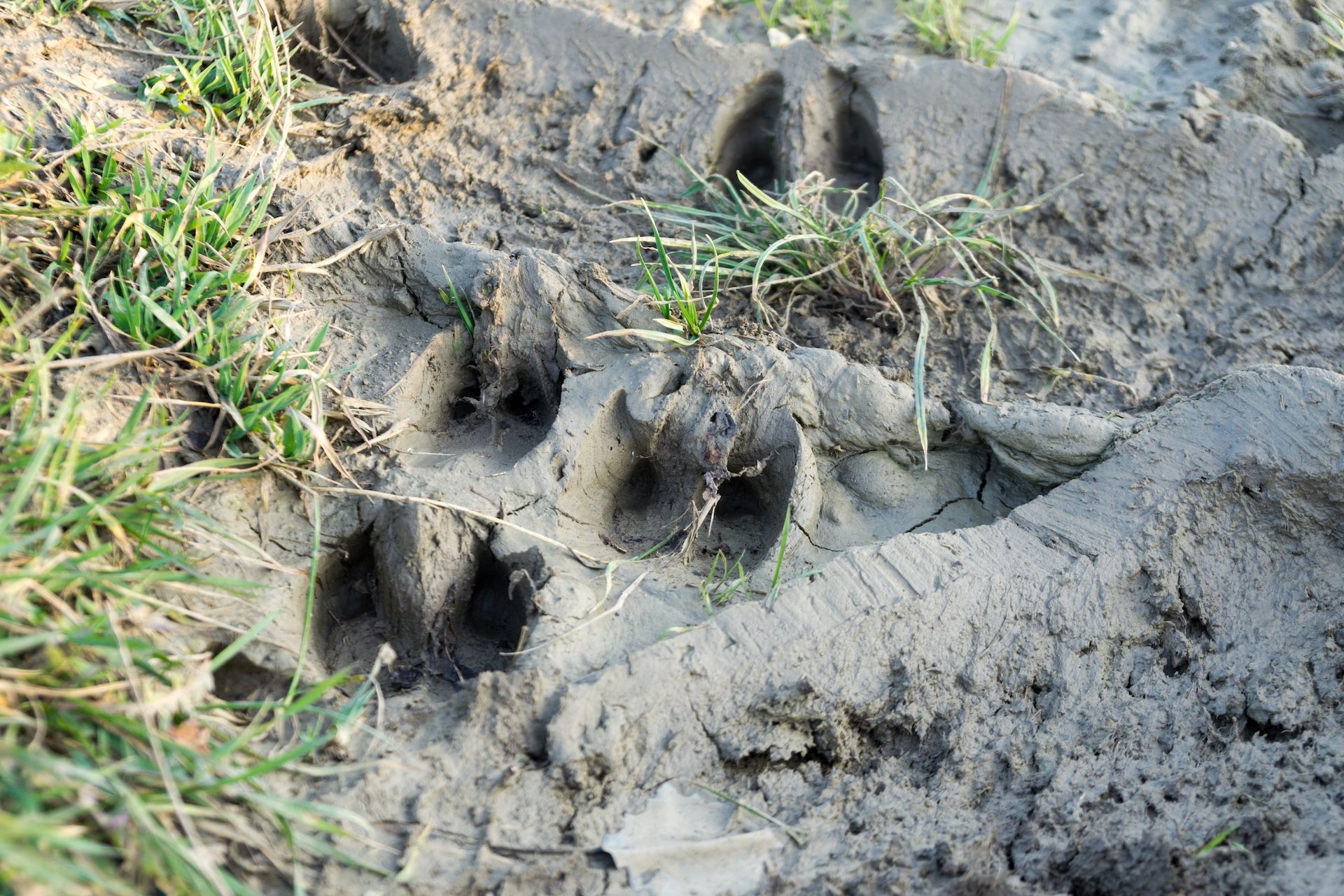
Where to Look for Deer Tracks
If you are hunting on public or private ground and are looking for hotbed areas of deer activity, there are several places to look for tracks.
Some of these I have already mentioned, but a few good areas to search for tracks are:
Depending on the recent weather, also look in muddier areas or scout for tracks after fresh snow.
Pro Tips for Understanding Tracks for Hunts
If you are trying to get extremely precise when differentiating between buck and doe tracks, you could use any measuring device or simply a knife handle to determine the size difference between tracks.
Also, something I alluded to earlier, when trying to determine how recent a track is, pay attention to the freshness of the dirt and how crisp it is on the edges of the track. If the track is a little older, the dirt will have smoothed over due to elements. It will have a distinctive look compared to a fresh track.
Remember: if you are trying to piece together a puzzle of where the mature bucks are hanging out and where they are traveling, identifying deer tracks is only one piece of the puzzle. To put everything together, you must find rubs, scrapes, and plenty of droppings. This combination of deer sign will show where a mature buck is living and how often they are in the area.
Then, using deer tracks and rubs, you can figure out which direction they are consistently traveling on their paths. Odds are, you will find a scrape or two following these clues, which will lead to a favorable spot to set up.
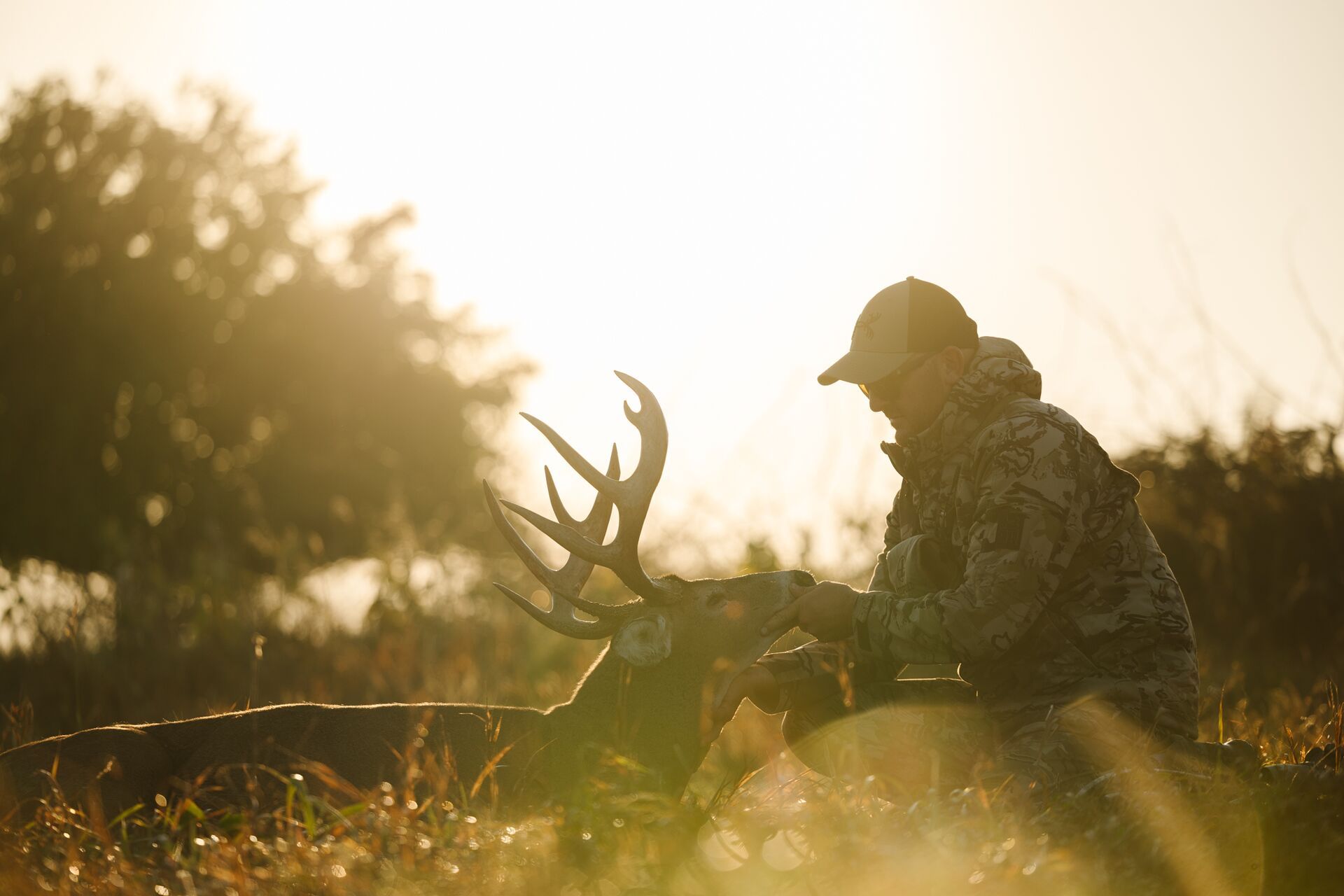
HuntWise Helps You Scout and Plan Your Whitetail Hunt This Season
Before you take a step into the woods to start your scouting, you'll gain a big advantage with HuntWise to pre-scout the area. Using the map feature and all the different layers, it’s easy to find potential travel corridors and bedding areas without ever disturbing a leaf.
Identifying these high-probability locations before trouncing into the woods is a game-changer because it saves you from disturbing every spot in the woods trying to scout. With HuntWise, you can identify the areas that have a higher chance of success and check those areas for white tail deer tracks and activity without scaring every animal out of the woods.
Now is the time to start prepping for fall deer hunts! Download HuntWise and put the app to work for you — free during your first week.
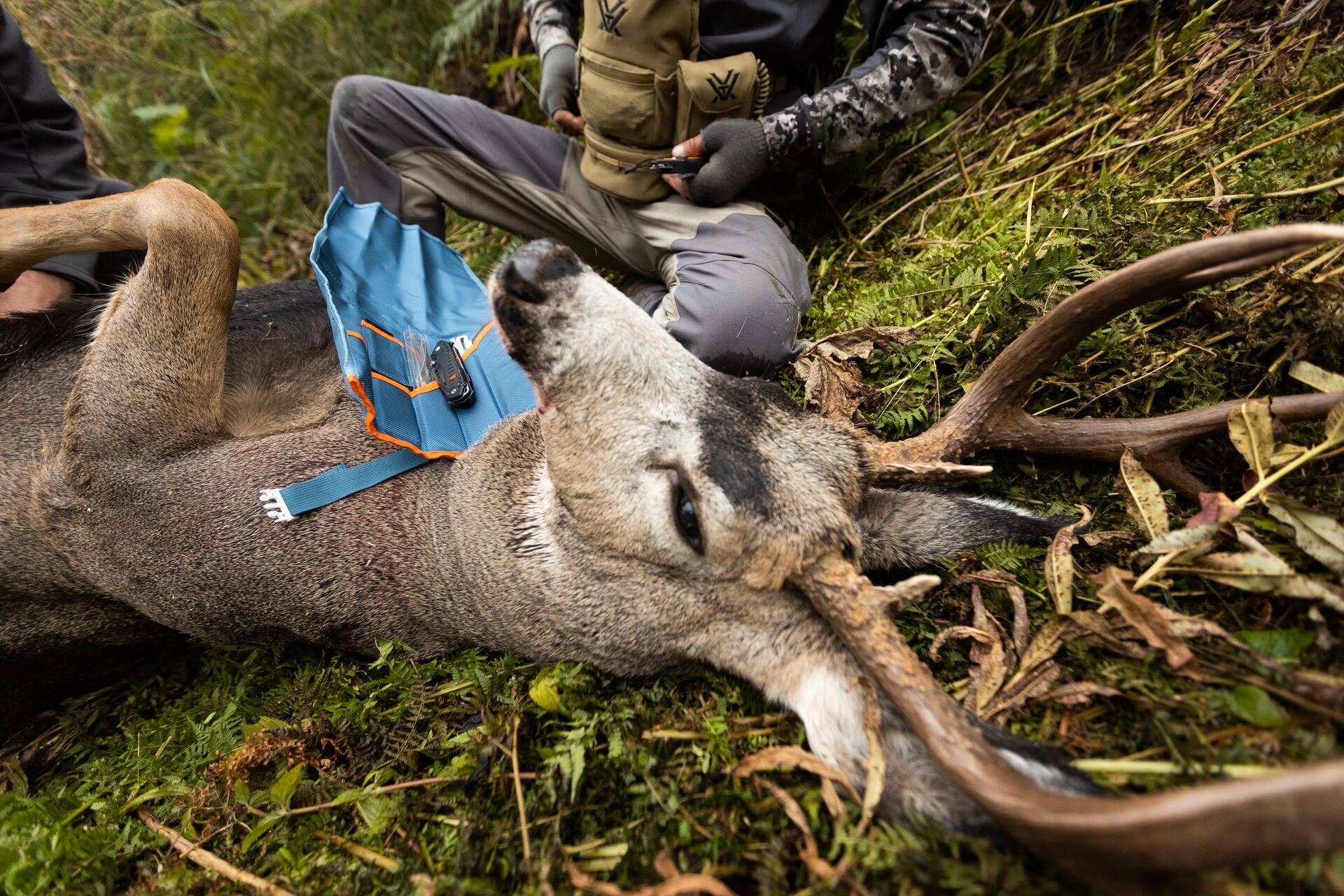
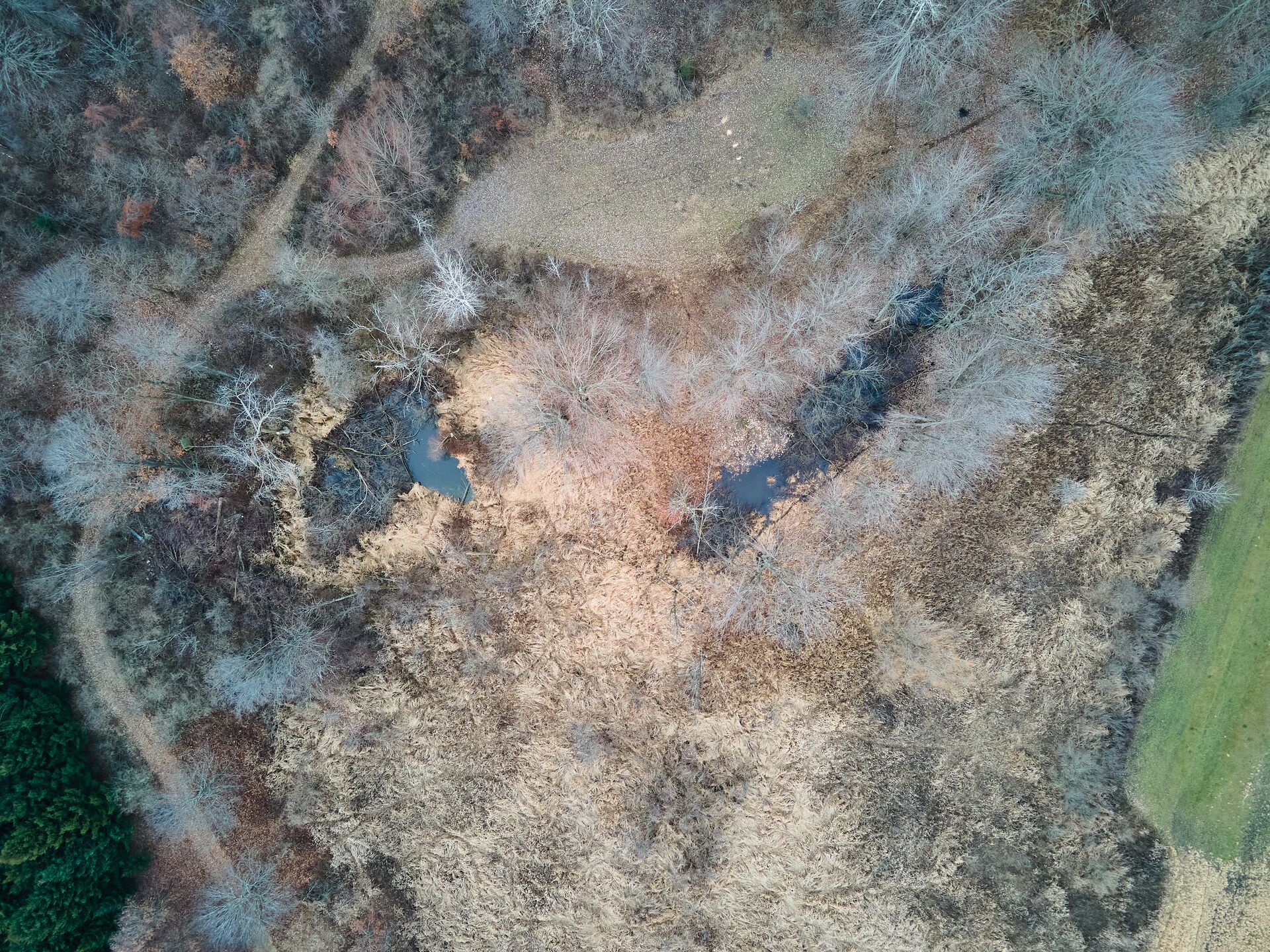
 Deer
Deer Deer
Deer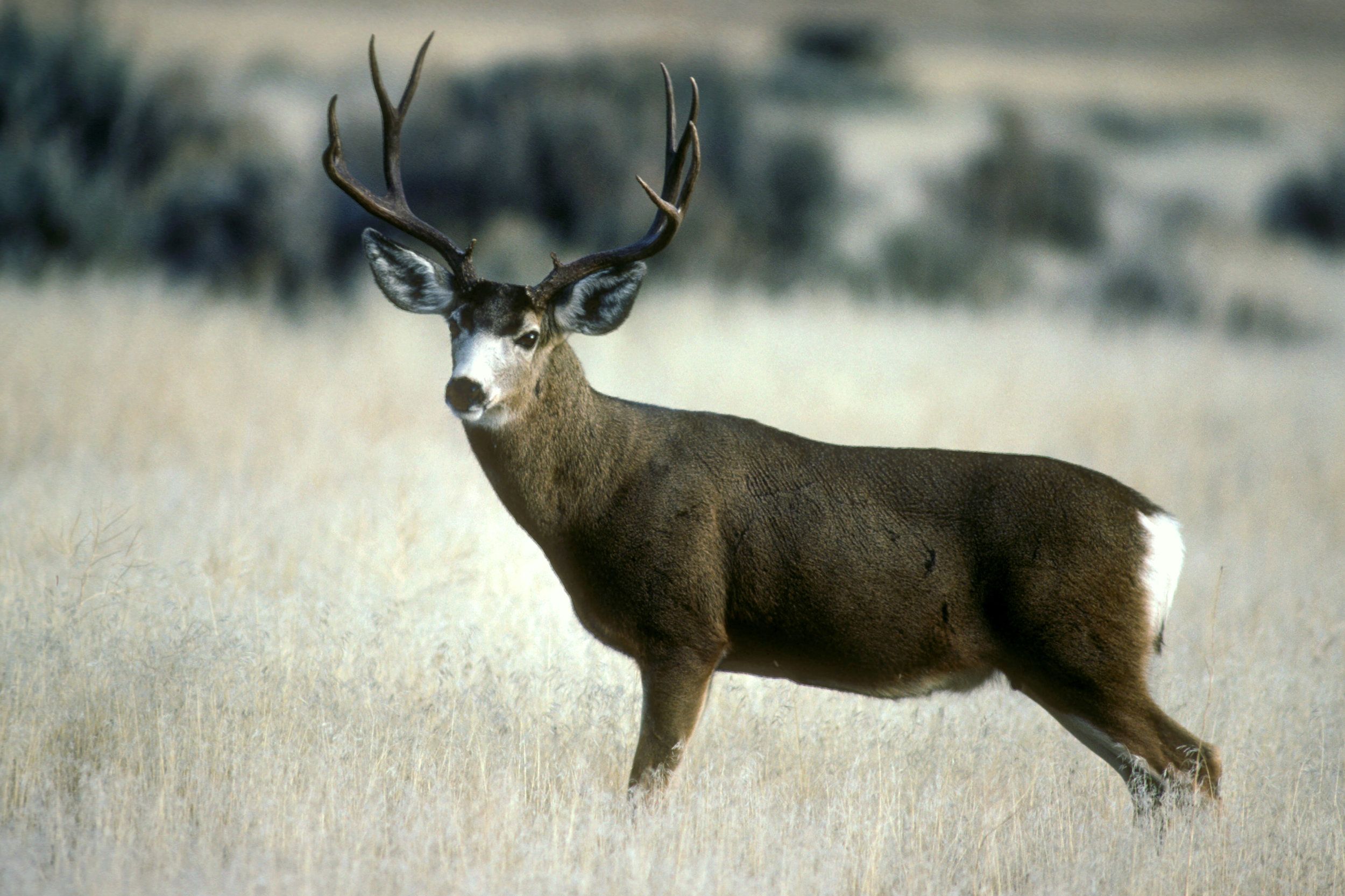 Deer
Deer